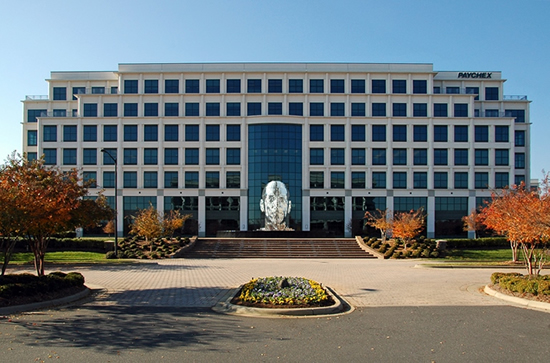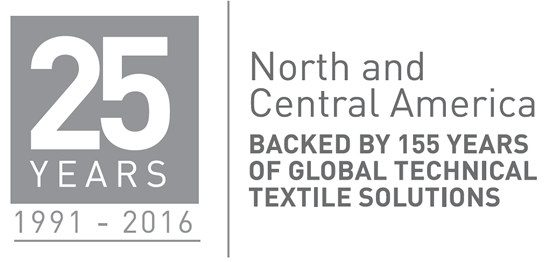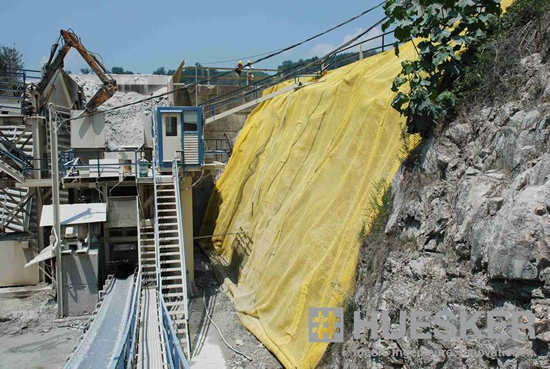By Chris Kelsey – This is Part 1 of 2 of a profile. Part 1, based on an interview with HUESKER North America’s first president, Tom Collins, looks at the founding of the North and Central American operations. Part 2, an interview with current CEO Sven Schröer, focuses on the current wave of growth with the company, which is celebrating its 25th anniversary. This two-part story is also part of an ongoing project from Geosynthetica to document the historical development of the geosynthetics field and how those earlier investments are tied to current innovations and forthcoming opportunities.
**





On April 4, 1991, Tom Collins accepted the biggest challenge of his career: He started up North American operations for HUESKER’s growing geosynthetics business. The market for geosynthetics in the United States was still challenged by a lack of market awareness, something Collins knew well from having already worked in geotextiles for more than two decades at that point.
“It was a little scary,” Collins said, on accepting Germany-based HUESKER’s invitation to run—to create—an American operation. “At that point, I was about 50 years old and I was working for a company that liked me. But, I came to the decision that sometimes in life you have to take some risks and try things that are different.”
The gamble paid off, for him, for HUESKER, and for the US marketplace, which needed more energy, insight, and options in applying geosynthetics properly in infrastructure.
HUESKER’s North and Central American operations are now celebrating their 25th anniversary, with plenty of innovation and growth in the pipeline to suggest much more is to come.
AN EARLY START FOR TOM COLLINS
Collins entered the geosynthetics field in 1969, nearly a decade before common terminology (geotextile, geogrid, geosynthetic) were proposed.
“I started with a company called Celanese Fibers Marketing Company,” he said. “We were partners with a company out of England called ICI (Imperial Chemical) making fibers. They had developed a nonwoven and were employing it in road building. Celanese sent me to England to look at it to see if it would be of interest to the company to manufacture and market in the US. That’s what got me started in geotextiles.”
Out of this he worked with Mirafi (which changed hands over the years and is now part of Tencate), Crown Zellerbach, and Wellman Fibers.
He’d become familiar with HUESKER and its products working with Crown, and that experience, building upon his early interaction with ICI, led him to suggest a market move for Wellman.
“At Wellman, we had one machine and we had it sold up most of the time,” Collins said. “I said, ‘Why don’t we work up some sort of distribution agreement with one of the European companies?’ That turned out to be HUESKER.”
The company imported HUESKER products in the 1980s, and they were selling a fair amount of geogrid; but, the US market was hard to read. Committing substantial resources to an area that was not a manufacturer or distributor’s specialty was a hard commitment to make. HUESKER wanted to do more. Wellman was not comfortable with the level of investment it might require.
That’s when HUESKER decided it would launch its own dedicated office for the North American market. The company approached Tom Collins about running it.
A LITTLE LUCK
April 4, 1991 became the launch date. HUESKER made Charlotte, North Carolina the home for its new venture.
“At that point, we were strictly a distribution depot,” Collins said. “We were three people: a sales guy, an office manager, and myself, doing everything, including driving the fork lift. We started out in a small office, a warehouse complex with a little office in the front.”
The Trans-Atlantic connection, bolstered by more than a century of manufacturing knowledge and a long project record, had plenty of advantages from the innovation and support side; but the US market potential was in some respects constrained by the distance. Many potential customers were interested in what was present in the US: projects, materials, etc.
“[In the ‘70s and ‘80s], it was very difficult to convince someone to try something that was used on a job in Germany or France or Italy,” Collins said. “They wanted to know how it had been done here.”
A Bureau of Reclamation employee had once told him to come back in 50 years when he had project records to prove longevity. A contractor unfamiliar with geotextiles asked if Collins really wanted him to build a road “with bed sheets.”
“You had to overcome a lot of skepticism about the materials,” Collins said.
In launching a distribution center in Charlotte but taking shipments entirely from overseas, Tom Collins found himself in a similar quandary.
“We were bringing in grids from Germany and trying to sell them as fast as they could ship them. We had a list of items we thought we could sell, but you can’t sell an item to a contractor in the States if it’s sitting in Germany. It had to be here.”
Here in the early 1990s, just as geosynthetics were building better awareness, the broad availability of the materials in ready-to-install rolls had yet to stabilize. Manufacturers and distributors were seeking the right balance.
It’s what made fully entering the business so risky and why so many technical textile firms did not commit to the geosynthetics market when they seemed to be in position to do so. The potential for geosynthetics was enormous, but would the projects be there?
“We got really lucky,” Collins said. “We hit a big job with the New Jersey DOT using high-strength geotextile. We got the order. So, we actually made money that first year. That’s unheard of with many distribution companies. I don’t recall the size of order but it was probably between $2 and $3 million. It was a pretty big project.”
That project didn’t secure the next 25 years of growth—Tom Collins and his team had plenty of work to do—but it secured the first year and gave them the capital to apply growth strategies for the second year, third year, and so forth.
A VIEW OF THE FUTURE
Following the success of the New Jersey DOT project, HUESKER’s North American headquarters made the type of move the geosynthetics market dearly needed: it added technical expertise to back up the sales side. Collins hired two engineers.
“If you had an engineer drawing up a design for an embankment,” Collins said, “now he wasn’t only talking to a sales guy. He was talking to an engineer who could give guidance on the product and how it would work and what its properties were.”
From there, the careful process of adding depth went forth: another technical person, another sales person, and the years of operational growth continued.
The business decisions weren’t just focused on personnel. The company eyed a future of customer-supporting enhancements, such as more efficient and cost-effective delivery of materials, the ability to fabricate specialty materials, and so forth.
“We did a lot of seam goods and layout fabrics,” Collins said. “[HUESKER has] done those things for a long time in the warehouses. We had high-strength sewing machines to join rolls together. Contractors don’t want to do that in the field. You want to deliver a roll that is 100 meters long by 100 meters wide, so we’d join 20 of these panels. So we did some of that in the early days, in the ‘90s. We fabricated mats for coal mines with high-strength grids.”
Manufacturing came into view too. The late Ron Marsh of Shelby, North Carolina-based GeoComp had manufacturing equipment but lacked a sales force. Collins discussed selling his products, but Marsh countered with how HUESKER could buy his company. An agreement was worked out, HUESKER took over the Shelby operation and Marsh remained as a salesman for a number of years.
With the space in Shelby, even larger orders could be handled quickly. The mining mats could be 5, 6, 10 rolls wide. With the new space, the company could seam them all together, serving bigger projects with an efficiency and economical value that was built upon the expertise the company had fostered in its earliest days.
This expansion by acquisition was how HUESKER North America celebrated its 10th anniversary. That same facility, coincidentally, was substantially expanded in size and capabilities as HUESKER put its 25th anniversary plans in motion.
HARD WORK PAYS OFF
The geosynthetics field faced a number of challenges in building awareness and gaining acceptance in the wider engineering community. Collins laughed about how hard it could be to overcome an engineer’s natural caution, but he also expressed appreciation for it and for the hard work of so many others who enabled the field to grow.
“I think people were receptive to new ideas,” he said. “Look where the geotextile and geosynthetics businesses are today compared to 25 years ago! There were a lot of people in my group who had to go out and do the grunt work to get geosynthetics established, then you bring in people like Koerner and Peggs who helped take it to another level of technology. You had sales people working in concert with academic and technical people, then the engineers felt more comfortable about the whole thing.”
Tom Collins still maintains a strong relationship with HUESKER’s teams, especially in the Americas, but he plays no active or advisory role.
“We had wonderful products,” he said of the early days.
The company still does, and there are 25 years of successful projects and product innovations to show for it.
**
READ PART 2: Sven Schröer on Growth in Geosynthetics
Learn more about HUESKER’s products, engineering services, and people at www.huesker.com.











